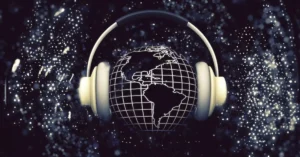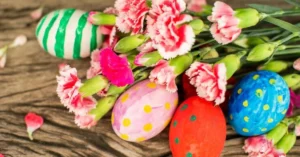In the world of collectible spirits, few categories have experienced as rapid a rise in both cultural prestige and market value as bourbon. With limited releases fetching thousands and old labels becoming auction darlings, the need for a structured valuation system has never been greater. Enter the Bourbon Blue Book.
To those unfamiliar, the Bourbon Blue Book serves a similar function to the Kelley Blue Book in the auto industry: it aims to assign fair market values to bottles of bourbon based on sales data, scarcity, age, provenance, and current demand. But it is more than a price list—it’s a cultural archive, a collector’s ledger, and an economic indicator of America’s most historic whiskey.
What Is the Bourbon Blue Book?
The Bourbon Blue Book is a pricing and valuation reference for bottles of bourbon whiskey, ranging from everyday sippers to ultra-rare collectibles. Unlike manufacturer-set retail prices, the Blue Book reflects real-world resale values determined by:
- Secondary market sales
- Online auctions
- Private trades
- Retail scarcity
It compiles and analyzes this data to create a dynamic, crowd-informed pricing guide that updates regularly, often monthly or quarterly.
The book may exist as a digital subscription platform or printed annual, depending on the source. Several services now compete in this space, each offering their own versions with slightly different methodologies.
Why the Bourbon Blue Book Exists
1. Market Explosion
The past decade has seen bourbon transition from humble American staple to a global luxury item. With bottles like Pappy Van Winkle, Old Forester Birthday Bourbon, and Willett Family Estate commanding huge markups, price confusion has surged.
2. Fraud Protection
For both buyers and sellers, the Blue Book offers a layer of defense against overpaying or undervaluing bottles. It also helps authenticate pricing in online forums and trade groups.
3. Collector Utility
Collectors now track their liquid assets like stock portfolios. A trusted pricing guide allows them to calculate total collection worth, track appreciation, and decide when to buy or sell.
What Factors Influence Bourbon Blue Book Valuations?
1. Rarity and Production Volume
A one-time release from a now-defunct distillery will obviously fetch more than a widely available expression. Limited batches and single barrels are typically valued higher.
2. Age Statement and Maturation
Longer-aged bourbons generally command premium prices. A 15-year bourbon from Buffalo Trace will often price above a 10-year of the same lineage.
3. Provenance and Storage
Bottles kept in ideal conditions (no fading, temperature-controlled) with intact seals and original packaging are more desirable. Provenance also matters: a bottle purchased at retail is worth more if it comes with receipt or original allocation.
4. Market Sentiment
Current buzz, press coverage, or a distillery’s recent awards can sharply influence value.
5. Packaging and Labeling
Misprinted labels, old-style packaging, or discontinued branding can add a “collector’s rarity” premium.
How Bourbon Blue Book Data Is Collected
In 2025, digital data collection dominates the valuation process. Sources include:
- Major auction houses (Sotheby’s, Whisky Auctioneer)
- Bourbon resale platforms
- eBay (where legal)
- Private group trades tracked anonymously
- Retailer back-end data (partnered with the book)
Algorithms synthesize these data points with human oversight to eliminate outliers and flag anomalies. Analysts adjust values based on volume, transaction quality, and source reputation.
Using the Bourbon Blue Book: For Enthusiasts and Professionals
For Buyers:
- Check pricing before purchasing a bottle on the secondary market
- Evaluate fair offers when participating in trades
- Plan collection strategy based on appreciation potential
For Sellers:
- Set accurate price points for auctions or private deals
- Justify premiums on rare inventory
- Track demand surges to time your sales
For Retailers and Distributors:
- Gauge consumer perception of value
- Refine allocation models
- Educate staff and customers
The Bourbon Collector Economy
Collecting bourbon is now an investment class. As with art or vintage cars, the Bourbon Blue Book serves as a benchmark of that asset class.
- Portfolios are insured
- Collections are appraised annually
- Investors use bottle valuation to diversify holdings
- Distilleries monitor resale activity to adjust future releases
In 2025, rare bourbon has moved from the bar cart to the safe deposit box.
Real-World Examples: Bottles and Their Blue Book Stories
1. Pappy Van Winkle 15-Year (2015 release)
- MSRP: $90
- 2020 resale: $900
- 2025 Blue Book: $1,250
2. Elijah Craig Barrel Proof (Batch B518)
- MSRP: $65
- 2020 resale: $95
- 2025 Blue Book: $310 (due to flavor cult status and limited batch)
3. Blanton’s Gold (Japan release)
- MSRP: $120
- 2020 resale: $250
- 2025 Blue Book: $700 (international demand, low U.S. supply)
These fluctuations underline the importance of a trusted pricing guide.
Risks and Criticism of the Bourbon Blue Book
1. Inflated Speculation
Critics argue that published price guides contribute to hype cycles and speculative bubbles. Some distillers fear this distorts the brand’s original value proposition.
2. Limited Access
Some Blue Book services operate on subscription models, limiting access to serious hobbyists only.
3. Forgery Risks
As prices rise, fakes enter the market. A Blue Book cannot guarantee authenticity but may help detect pricing inconsistencies that suggest fraud.
Future Trends in Bourbon Valuation
1. Digital Bottle Identity
Blockchain-verified bottles may soon tie value directly to a digital certificate, further legitimizing trade.
2. Integration with Trading Platforms
Bourbon Blue Books may embed APIs into trading sites, enabling live valuation during transactions.
3. AI Price Forecasting
Machine learning models could begin predicting future bottle values based on release cycles and sentiment analysis.
4. Global Expansion
As international markets (notably Asia and Europe) embrace American bourbon, valuation guides will become essential for cross-border trades.
Conclusion
The Bourbon Blue Book is more than a catalog of prices—it is a reflection of bourbon’s cultural ascent and a necessary tool for navigating its vibrant, volatile secondary market. As collecting bourbon moves beyond passion into the realm of strategic investment, this guide offers structure, data, and insight.
For seasoned connoisseurs, casual fans, and professional investors alike, the Bourbon Blue Book represents a modern solution to an age-old pursuit: knowing the worth of what we value.
Whether you’re buying, selling, or simply admiring a bottle on your shelf, knowing its place in the market transforms your relationship with it—from ownership to understanding.
Frequently Asked Questions (FAQs)
1. Is the Bourbon Blue Book available to the public?
Yes. Some versions are publicly accessible online, while others require paid subscriptions for full access.
2. How accurate are the values listed in the Bourbon Blue Book?
Values are based on real market data and updated regularly. They reflect trends but can vary slightly by region.
3. Can I use the Blue Book to sell my bottle?
Yes, it can guide pricing for private sales, trades, or auction listings.
4. Do all bourbon bottles appear in the Blue Book?
Only collectible, limited, or high-demand bottles are typically listed. Everyday bottles may not be included.
5. How often is the Bourbon Blue Book updated?
Most reputable sources update quarterly, with some offering live data for premium users.
For more information, click here.









